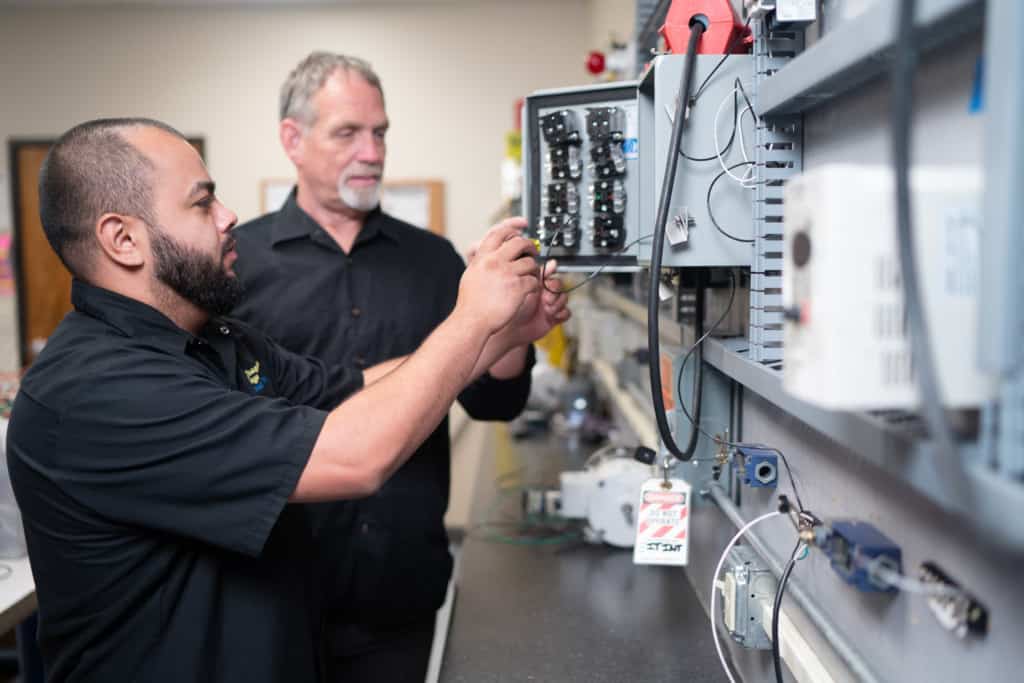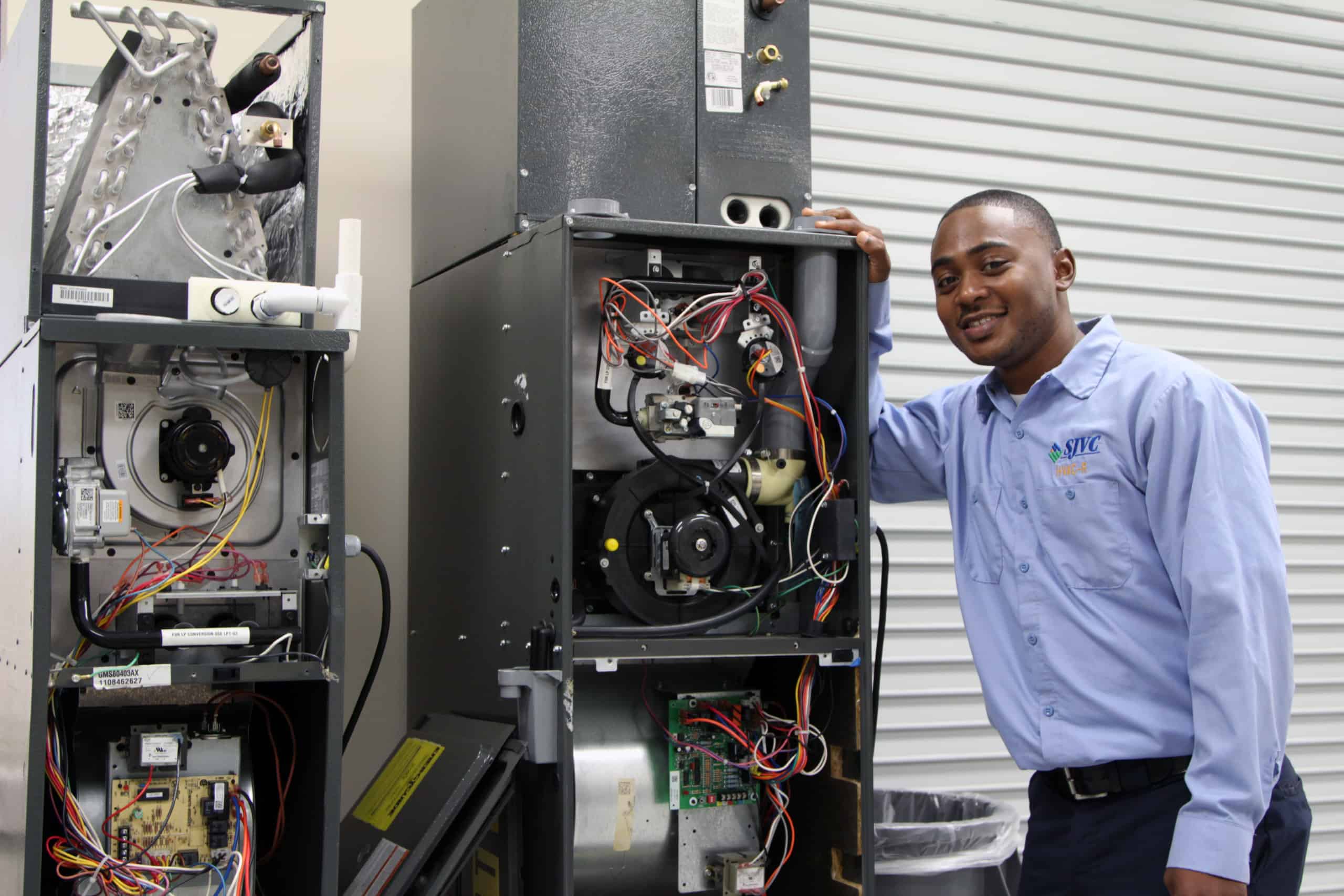How to Become an HVAC Technician in California
There are a few steps to take if you’re interested in being an HVAC technician. Typically, technicians should have a postsecondary education, some specialized training and work experience. Here are some of the milestones along the road to becoming an HVAC technician.[5]
Many HVAC technicians receive postsecondary instruction from technical and trade schools or community colleges. These heating, ventilation, air conditioning and refrigeration (sometimes called HVAC-R) programs can be completed in as little as 10 months and lead to a certificate of completion.
- Get training and experience
New HVAC techs usually work alongside experienced technicians. At first, they perform basic tasks of maintenance and cleaning, but with experience will move on to more difficult tasks, such as brazing/welding refrigerant piping, troubleshooting electrical circuits and major component replacements.
Some techs may instead be trained through apprenticeships, lasting from three to five years.
- Get licenses, certification and registrations
The U.S. Environmental Protection Agency requires certification for all technicians who buy, handle, or work with refrigerants. This is commonly called the Section 608 Universal certification. Many trade schools, unions and employer associations offer training programs to prepare students for the exam.
Some states and localities may require additional HVAC technician certification, licensure or registration to work.
In California, HVAC technicians aren’t required to be licensed, but HVAC contractors must be. These licenses – Class C 20 Specialty Contractor License: Warm Air Heating, Ventilating and Air Conditioning – are issued by the California Department of Consumer Affairs Contractors State License Board. Contact the board for more information.[6]
Do I Need to Do an HVAC Apprenticeship?
Apprenticeships are traditionally used to teach someone a trade alongside a mentor. The apprenticeship is an on-the-job training program that bypasses college or vocational training. This type of training can take several years to become a journeyman and then a licensed Contractor.[7]
Apprenticeships are not required, though, especially for those who pursue an HVAC-R certificate.
Do I Need to Join a Union to Work in HVAC?
Each state has its own requirements regarding unions and work. For example, California is not a right-to-work state, so an employer may require you to join a union as a condition of employment.[8] You can contact your own state’s labor agency to find out whether it requires union membership.
There are two major unions for HVAC technicians:
- The United Association of Journeymen and Apprentices of the Plumbing, Pipefitting and Sprinkler Fitting Industry of the United States and Canada (United Association or UA)[9]
- The International Association of Sheet Metal, Air, Rail, and Transportation Workers (SMART)[10]
Each association offers information and apprenticeship programs for those interested in HVAC.
Are There Any HVAC Certifications?
The EPA Section 608 Technician Certification is necessary for anyone handling refrigerants. There are several levels of this certification. There is also one certification that certifies excellence in the HVAC field.[11]
These certifications include:
- EPA Type I Certification – This is for those who service small appliances, such as window air conditioners.
- EPA Type II Certification – This is for those who work with high-pressure systems.
- EPA Type III Certification – This is for those who service low-pressure systems.
- Universal EPA Certificate – This is a certificate that covers all EPA types.
- North American Technician Excellence (NATE) – This is a national certification that recognizes excellence on two levels: those new to the industry, and those with additional experience.
Where Can I Work as an HVAC Technician?
HVAC technician jobs are available all over the nation. For those working in California, a tech only needs to join a union, join an HVAC company or just begin their own company.
HVAC technicians work mostly in factories, homes, hospitals, office buildings, schools or stores. The majority of HVAC techs (66%) work for plumbing, heating and air conditioning contractors.[12]
There are several large companies and contractors in Central California that hire HVAC technicians. Recently, Inc. published a list of the 5,000 fastest-growing private companies, which included three companies in the region.[13]
- Kuubix Energy, which installs solar power units, ranked 47. The Visalia-based company has grown by 5,899% over three years.
- Comfort Now, also based in Visalia, is ranked 4,311. The HVAC company has grown 77% over three years.
- Lee’s Air Conditioning, Heating & Building Performance is ranked 4,744 nationally. It has grown by 62% over three years out of its base in Fresno.

